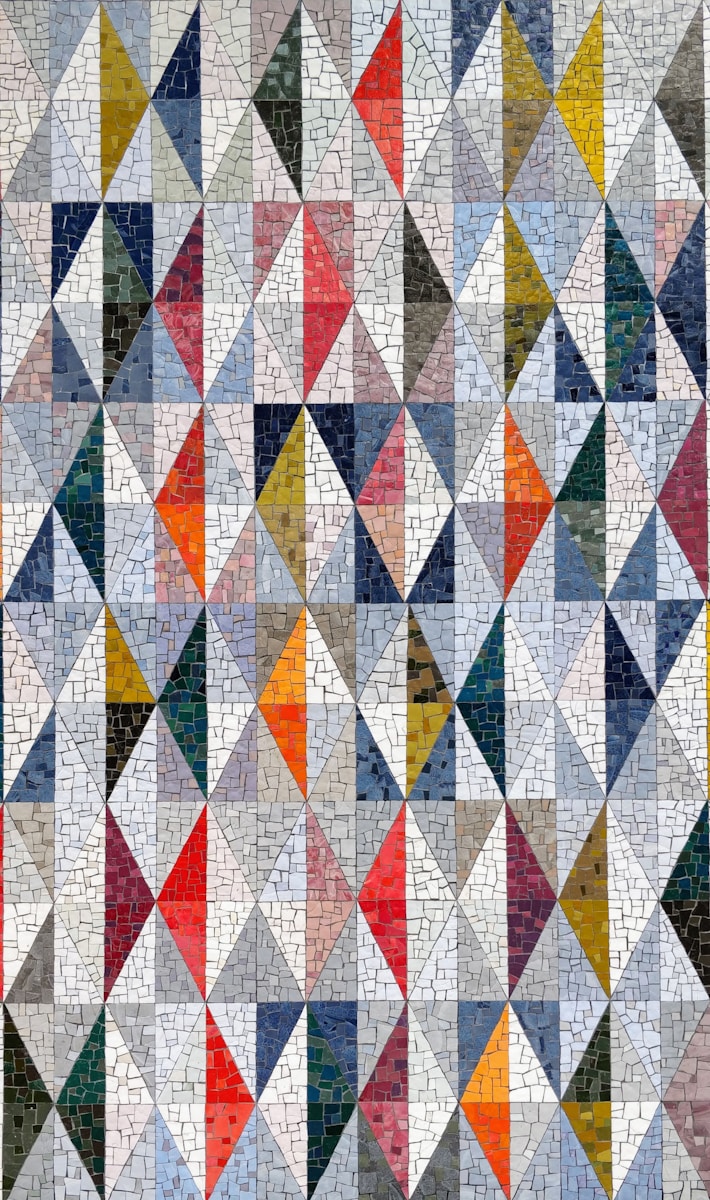Jurisdiction Of The DRI As “Proper Officer” To Issue Show Cause Notice Under The Customs Act, 1962

’Commissioner of Customs vs. Canon India Pvt. Ltd.
[Order dated 07.11.2024 in Review Petition No. 400 of 2021 in Civil Appeal No. 1827 of 2018]

Brief background
Review Petition: The Central Government issued various notifications to appoint and designate the officers of Directorate General of Intelligence (“DRI”) as “officers of customs”. In exercise of such purported powers the DRI offices issued show cause notices under the Customs Act, 1962 (“the Act”) and possession of such power by the DRI officers was also clarified by the Central Board of Excise and Customs (“CBEC”) vide its Circular No. 4/99-Cus dated 15.02.1999. A three-judge bench of the Hon’ble Supreme Court in Canon India [2021 (376) E.L.T. 3], had held that the DRI officers do not have power to issue show cause notice as such notices can only be issued by “proper officers” who had assessed and cleared goods during clearance and not by any other officers. This judgment relied upon an earlier judgment of the Supreme Court in Sayed Ali [(2011) SCC 537], in which the Court linked Sections 17 and 28 of the Act and had held that Commissioner of Customs (Preventive) is not a “proper officer” as defined in Section 2(34) of the Customs Act, 1962 (“the Act, 1962”) and therefore did not have the jurisdiction to issue a show cause notice. The department filed review petition against Canon India on the grounds that there is an error apparent on the face of record.
Amendment: Following the judgments in Sayed Ali and to nullify its effect, the Central Government had issued Notification No. 44/2011-Cus (NT) dated 06.07.2011 and amended Section 28 of the Act vide Customs (Amendment & Validation ) Act, 2011 (“Validation Act, 2011”). Similarly, after Canon India, Finance Act, 2022 inserted Section 110 and amended sections 2,3 and 5 of the Act. Section 97 of the Finance Act, 2022 retrospectively validated the show cause notices with effect from 01.04.2022.
Challenge to the Amendment: Subsequently, Section 28(11) of the Act was challenged before the Hon’ble Bombay High Court and Hon’ble Delhi High Court in Sunil Gupta [2015 (315) E.L.T. 167] and Mangali Impex [2016 (335) E.L.T. 605], respectively. While the Bombay High Court upheld the validity of the provision, the Delhi High Cout declared it to have not given the power. The department filed appeal against the judgment of Mangali Impex.
Now, in its judgment dated 07.11.2024, the Hon’ble Supreme Court dealt with three clusters of matters:
- Review Petitions filed by the government against the judgment in Canon India;
- Appeals against the judgment in Mangali Impex in the issue of whether DRI is a proper officer; and
- Writ Petitions challenging the constitutional validity of Finance Act, 2022.
It was contended by the department that since the issue in Canon India and Mangali Impex are same, the review petition and the appeals be heard together.
With the insertion of Section 110AA in the Act, the legal position w.e.f. 01.04.2022 is that a show cause notice under Section 28 of the Act, 1962 can only be issued by that “proper officer” who has been conferred with the jurisdiction, by an assignment of functions under Section 5 of the Act, 1962, to conduct assessment under Section 17 of the Act in respect of such duty. Hence the dispute in the present judgment relates to period prior to 01.04.2022.
Rule 96(10) of the CGST Rules places restriction on the exporters from availing dual benefits by simultaneously claiming IGST exemption on imports made under Notification Nos. 78/2017 and 79/2017- Cus both dated 13.10.2017 (“Notification No. 78/79”) and paying IGST on exports through Input Tax Credit with the intention of claiming a refund of the said IGST amount under Section 54 of the CGST Act read with Rule 89 of the CGST Rules.
Vide Notification No. 20/2024-Central Tax dated 08.10.2024, Rule 96(10) has been omitted with effect from 08.10.2024.
Maintainability of Review Petition
The Court observed that when a review petition is filed under Order XLVII of the Supreme Court Rules, 2013, it will be entertained only when it fits in one of the grounds mentioned in Order 47 Rule of the Code of Civil Procedure (CPC). The three grounds so available are: (i) discovery of new and important matter or evidence which was not within the knowledge of the petitioner or could not be produced by him at the time when the decree was passed or order made; (ii) mistake or error apparent on the face of the record; or (iii) any other sufficient reason. Of the three grounds, the Court held that the present case would fall under “any other sufficient reason”. Such sufficient reason should be something analogous to other grounds specified in the rules.
Relying upon, a catena of judgments the Court observed that when a court disposes of a case without due regard to a provision of law or when its attention was not invited to a provision of law, it may amount to an error analogous to one apparent on the face of record sufficient to bring the case within the purview of Order 47, rule 1 of the CPC.
As per the Court, the following legal provisions were not brought to the attention of the Court in the Canon India judgment:
- Attention of the Court was not brought to the change in the scheme of Section 17 w.e.f. 08.04.2011. Before the amendment of Section 17 by Finance Act, 2011, there was assessment and re-assessment of Bill of Entry, but post-amendment, scheme of self-assessment was introduced. In view of such amendment, the Court could not have relied upon judgment in Sayed Ali which was passed before amendment. [Relied upon judgment dated 09.06.2022 of Madras High Court in M/s.N.C. Alexander v. Commissioner of Customs in W.P. Nos. 33099 of 2015]
- Circular No. 4/99-Cus dated 15.02.1999 issued by the CBEC which empowered the officers of DRI to issue show cause notices under Section 28 of the Act, 1962 as well as Notification No. 44/2011 dated 06.07.2011 which assigned the functions of the proper officer for the purposes of Sections 17 and 28 of the Act, 1962 respectively to the officers of DRI were not brought to the notice of the Court
- The Court in Canon India had observed that “Board” CBEC) does not have power to appoint proper officer, and power of CBEC under Section 4(1) of the Act to actually make such appointment was not brought to the notice of the Court. Prior to 11.05.2002, appointing authority was Central Government and post that date it was CBEC.
Supreme Court observations
Issue -wise analysis of the judgment is as follows:
(1) Whether the DRI has power to issue show cause notice under Section 28 of the Act?
- DRI officers came to be appointed as the “officers of customs” vide Notification No. 19/90-Cus (N.T.) dated 26.04.1990 [under Section 4(1)] issued by the Ministry of Finance, Government of India and Circular No. 4/99-Cus dated 15.02.1999 issued by the CBEC empowered the officers of DRI to issue show cause notices and finally Notification No. 44/2011 dated 06.07.2011 [under Section 2(34)] which assigned the functions of the proper officer for the purposes of Sections 17 and 28 of the Act, 1962.
- The decision in Canon India that notification for appointment should have been appointed under Section 6 is erroneous. Section 2(34) read with Section 4 and 5 of the Act contained the scheme of “assignment of functions” which is applicable to “officers of customs”, whereas Section 6 contains the scheme of “entrustment of functions” which applies to persons other than “officers of customs”. Since the DRI officers are officers of customs, they can issue show cause notice.
- The literal interpretation of the Act, prior to insertion of Section 110AA, there was no requirement in the law that the proper officer who issues show cause notice under Section 28. This scheme does not flow from the scheme of the statute and was judicially read in. Section 28 cannot be reduced to an administrative review of assessment/re-assessment done under Section 17. In this regard, the interpretation of this Court in the cases of Sayed Ali (supra) and Canon India (supra) is patently erroneous.
- The definite article “the” in Section 28 refers to a “proper officer” who has been conferred with the powers to discharge functions under Section 28 by virtue of a notification issued by the competent authority under Section 5. In other words, the use of article “the” in Section 28 has no apparent relation with the proper officer referred to under Section 17.
(2) Whether the introduction of Section 28(11) which retrospectively validates the show cause notices issued under Section 28 with effect from 06.07.2011, is discriminatory and arbitrary for not curing the defect highlighted in Sayed Ali? Whether the judgment delivered by the High Court of Delhi in the case of Mangali Impex expounds the correct interpretation of Section 28(11)?
- The High Court in Mangali Impex could not have applied the doctrine of harmonious construction to harmonise Section 28(11) with Explanation 2 because Section 28(11) and Explanation 2 operate in two distinct fields and no inherent contradiction can be said to exist between the two. Section 28(11) and Explanation 2 to Section 28 operate in two distinct fields.
- Section 28(11) validates the show cause notices issued by the DRI officers before 06.07.2011. Such officers, having been entrusted and assigned the functions of proper officer, are deemed to always have authority under Section 17, whether in terms of section 28 unamended or amended. Explanation 2 clarifies that case prior to amendment shall be governed by the unamended section. Setting aside the judgment in Mangali Impex, the Court held that a provision cannot be held unconstitutional merely on the apprehension that multiple proper officers will exercise jurisdiction under Section 28, especially when there is no substantial empirical evidence of the misuse of Section 28(11) which was enacted over a decade ago. The Court upheld the judgment in Sunil Gupta.
- The policy being followed by the Customs department since 1999 of excluding jurisdiction of all other proper officers once a show cause notice by a particular proper officer is issued could be said to be a sufficient safeguard against the apprehension of the issuance of multiple show cause notices to the same assessee.
(3)Whether Section 97 of the Finance Act, 2022, which retrospectively validates the show cause notices with effect from 01.04.2023, is manifestly arbitrary and therefore, violative of Article 14 of the Constitution of India?
The respondents challenged the validity of Section 97 of the Finance Act, 2022 on three grounds:
- Validation of past actions by Section 97(i) violates the principles of Canon India judgment since it will lead to a very anarchical and unruly operation of a statute which was sought to be avoided in Canon India.
- Section 97 of the Finance Act, 2022 is liable to be struck down as manifestly arbitrary and thus violative of Article 14
- Section 97 (iii) gives retrospective effect to the amendments made in Section 5 thereby making previous show cause notices subject to the new provision i.e., sub-sections (4) of Section 5 and the previous notifications empowering DRI officers to issue show cause notices do not fulfil the mandate of sub-section (4).
The Supreme Court made the following observations on challenge to Section 97 of Finance Act, 2002:
- As explained in the review of Canon India, there was no real defect which was pointed out as such judgment because it proceeded on an erroneous assumption and hence Section 97 was not clearing any defect but is merely a surplusage to the valid provisions already present in the statute.
- In matters of economic policy, it is a well settled principle of law that courts should leave it to the wisdom of legislature. The Court also relied upon Shri Prithvi Cotton Mills Ltd. [(1969) 2 SCC 283] to lay out different conditions in which legislature may pass a law to validate the tax collection which has been declared illegal. Also, Section 110AA does not create a class of assessees to whom the law would apply differentially to, at the same point in time.
- Sub-section (4) contains the word “may” which is indicative of the fact that CBEC has to mandatorily consider one of the criteria specified therein.
(4) The Court also held that the findings of the Court in Canon India in respect of the show cause notices having been issued beyond the limitation period remain undisturbed.
Supreme Court directions
In light of the judgment of the Court, it was ordered that the matters be disposed of in the following manner:
| Sr. No. | Conditions | Manner of disposal |
| 1. | Show cause notice issued u/s 28 and challenged before the High Court by a writ petition | High Court to dispose the writ petition as per observations of the present judgment and restore such notices for adjudication by the proper officer under Section 28. |
| 2. | Writ petition, challenging the show cause notice has been disposed of by the High Court and appeal has been preferred before the Supreme Court against order of the High Court | Supreme Court to dispose the writ petition as per observations of the present judgment and restore the impugned notice for adjudication by the proper officer under Section 28. |
| 3. | OIO passed by the adjudicating authority u/s 28 has been challenged before the High Court on the ground of lack of jurisdiction of the proper officer to issue show cause notice | High Court shall grant eight weeks’ time to the respective assessee to prefer appropriate appeal before the CESTAT. |
| 4. | Writ petition impugning order has been disposed of by the High Court and appeal has been preferred against it before the Supreme Court | Supreme Court to dispose the writ petition as per observations of the present judgment and grant eight weeks’ time to the respective assessee to prefer appropriate appeal before the CESTAT. |
| 5. | Order of CESTAT challenged before Supreme Court or the High Court on the ground of lack of jurisdiction of the proper officer to issue show cause notices | Supreme Court or the High Court shall dispose of such appeal or writ petition in accordance with the present judgment and restore such notices to the CESTAT for hearing the matter on merits |
| 6. | Appeals against the OIO involving issues pertaining to the jurisdiction of the proper officer to issue show cause notices are pending before the CESTAT | Shall now be decided in accordance with the observations made in the present judgment. |
W&B Comments
The jurisdiction of DRI officers to issue show cause notices is a long standing issue and show cause notices issued many years back have been in a suspended mode for a prolonged period due to the lack of clarity. While the judgment in Canon India (2021) appeared to have given the assesses a well-deserved relief, the issue of notice by the Supreme Court vide order dated 19.05.2022 [2022 (380) E.L.T. 529] in a review petition filed by the department, had a ripple effect across the country.
Based on such notice, the Hon’ble Bombay High Court, for instance, vide order dated 06.06.2023 in Idea Cellular, put a stay on the order based on show cause notice issued by the DRI. Following this, all the aggrieved assesses rushed to the High Court and sought identical relief. However, now that the issue has been so exhaustively dealt with and decided in favour of the department, there are two possibilities going forward. First, the assessee fights the case on merits and takes the statutory appellate route, which may be difficult for the assessee as well as the department due to the long interregnum. Second route could be to challenge the order on the grounds of long delay after issuance of show cause notice or that the show cause notice was issued after the expiry of period of limitation from the relevant date. Not all cases may fit such conditions.
It is also noteworthy that the submission of the respondents, that challenge to Section 97 of the Finance Act, 2022 should be separately dealt with and not in a review petition, has not been categorically answered in the judgment. In this context, it will be interesting to see if a review petition is preferred by the assesses against the order upholding the vires of the validating act.
We hope you have found this information useful. For any queries/clarifications please write to:
Prateek Bansal, Partner, Email – prateek.bansal@whiteandbrief.com
Disclaimer: The information contained in this document is intended for informational purposes only and does not constitute legal opinion or advice. This document is not intended to address the circumstances of any individual or corporate body. Readers should not act on the information provided herein without appropriate professional advice after a thorough examination of the facts and circumstances of a situation. There can be no assurance that the judicial/quasi-judicial authorities may not take a position contrary to the views mentioned herein.
By entering the email address you agree to our Privacy Policy.



